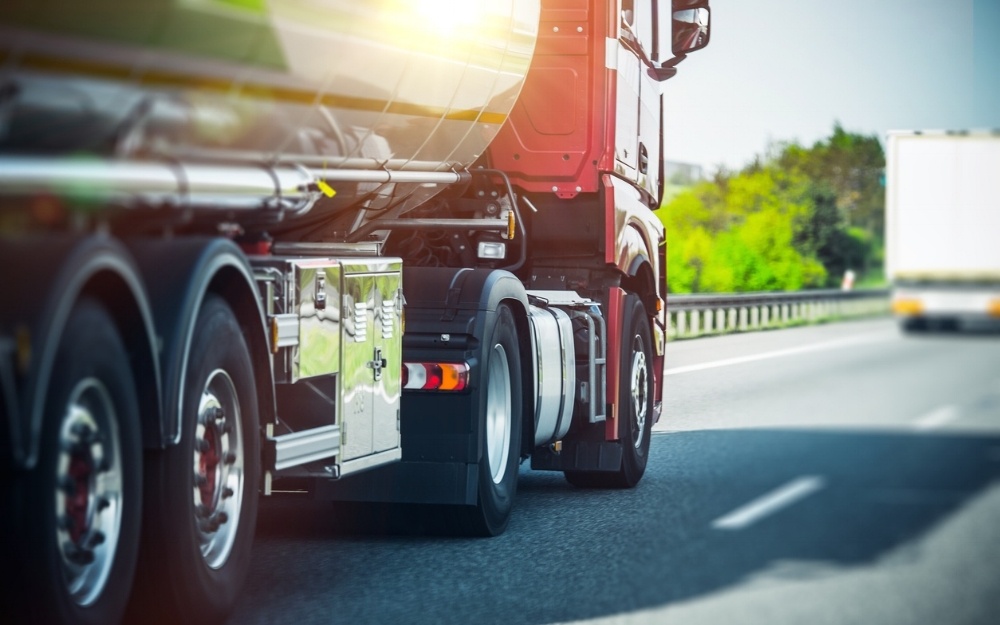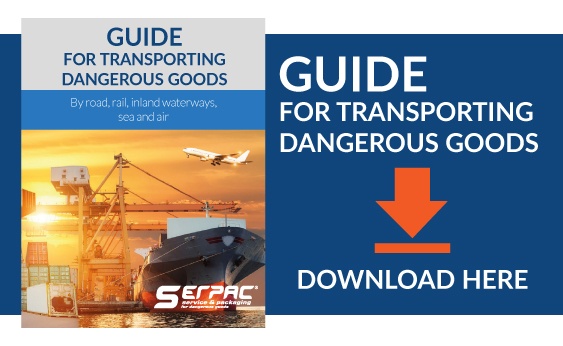How and where to apply ADR labels when transporting dangerous goods by road

One of the elements when preparing the transport of dangerous goods is certainly the correct use of labeling. Labeling is the most effective way to indicate not only the content of a package, but also of a container or of a vehicle, which is used for transport. By doing so, it makes it easier to intervene in a timely manner in case of an accident and to know immediately how to handle the affected products. Nonetheless, it is important to understand how to use these labels in a correct and effective way in order not to run into sanctions. These sanctions can vary from a fine to the blockage of the whole shipment and subsequently to the withdrawal of the driver’s license of the truck driver as well as the car registration.
Looking at the package, the container and the vehicle, we have diverse surfaces that require different treatments on how and where to apply labels, while following the rules and regulation put in place; this particularly refers to the ADR regulation on how to transport dangerous goods by road.
On labeling packages 5.2.2
The kind of label to apply depends on the content of the package, the size of the goods being transported and the method of transport itself. Let’s start by having a look at the single package. Explained in few words, a package is defined as the final product of the packaging operation, ready for shipment.
As subject to the ADR regulation, the package must obligatorily be equipped with hazard class labels that indicate its content. Those ADR labels are characterized by their diamond-shaped form, the material used is paper or polyethylene (PE) – material that resists harsh weather conditions – and measurements of 100x100 mm, with few exceptions. Generally speaking, labels must be applied next to the UN Specification Marking and must not cover other labels or markings present on the package. In the case of an IBC (Intermediate bulk container) with a capacity of more than 450 liters or bulk packaging, it is necessary to apply the labels on two opposite sides.
Placards 5.3.1: labeling for containers and vehicles
Dangerous goods labels, which are applied onto containers and vehicles are called placards. They have the same diamond-shaped form as packaging labels and are mainly produced in PVC with a diameter of 25 cm per side and thus, specify the danger(s) inherent in the substance.
Looking at containers otherwise known as “stackable transport units” there is one single rule: the placards must be applied onto all four sides, applicable to any type of container.
Vehicles are a more complex topic. When talking about vehicles with a fixed carriage or an inter-changeable one, the placards are not requested with exception of class 1 and class 7, placed onto two length and the back side of the vehicle.
In the case of vehicles with tanks and bulk cargo containers, it is necessary to apply placards onto both sides and the back of the transport unit, independently of the goods that are being transported. Ultimately, we have a look at container-boxes, where placards are attached onto all four sides of the box.
Orange panels: generic or with numbers
Let’s start with the generic orange reflective panels in the form of a rectangle with a minimum size of 400x300mm or 300x120mm (only for vehicles that are too small to have sufficient space for 400x300mm panels), which are solely applied onto vehicles. These panels declare the presence of hazardous goods on the inside of a transport unit, without indicating the specific danger or its UN number.
Now we have a look at the more complex orange number panels with the size of 400x300mm showing the Kemler number on the upper half and the UN number on the lower half. Those must be attached onto two opposite sides of certain kinds of containers and vehicles transporting bulk cargo, multiple element gas containers (MEGCs), tank-vehicles, mobile tanks and subdivided tanks.
The regulations pertaining to vehicles are manifold as each type of vehicle follows a strict set of rules regarding the application of panels:
- Vehicles that transport container boxes must apply orange panels on two sides only when transporting bulk cargo.
- Vehicles that transport bulk cargo as well as battery-vehicles can choose to apply the orange number panels on both sides or in front and on the back (instead of the orange generic panels).
- Tanks have the same rules as bulk cargo containers. In the case of tanks that are subdivided and carry various UN numbers, one must apply the orange number panels on two opposite length of each tank-divisions and moreover signal with the generic orange panels the front and the back of the vehicle.
These are the general rules to a correct application of the ADR regulation. As there are a lot more exceptions to the general rules mentioned above it is always worthwhile to ask for expert advice, or as an alternative, consult the legislative text of the ADR regulation online on the website of the Ministry of Infrastructure and Transport.
